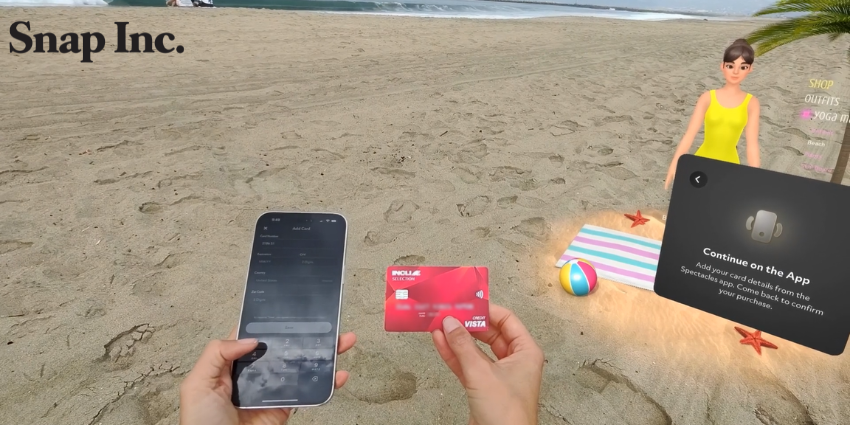Augmented reality glasses are transforming the field services landscape, helping businesses unlock new levels of productivity and efficiency while reducing safety risks. However, to unlock the full benefits these wearables offer teams, first, you need to identify the most important AR smart glasses features for field workers.
After all, field workers have unique needs when it comes to augmented reality technologies. They’re not just looking for great visuals or audio, they need their glasses to be lightweight, durable, easy to use, and connected with all of the critical software they use each day.
- If you’re still struggling to choose the right AR glasses for your team, check out our comprehensive guide to comparing AR glasses here. Alternatively, follow our top tips on how to implement AR glasses into your field operations to boost your chances of a higher return on investment.
Fortunately, the market for augmented reality glasses is evolving, with countless vendors offering specialist solutions fine-tuned to the needs of enterprise employees. Here, we’ll introduce you to the top features you should be prioritizing when sorting through your options, and why they’re so valuable to field services teams.
The Top 8 AR Smart Glasses Features for Field Workers
We’ve come a long way from the days when AR glasses for field service professionals were little more than glorified solutions for “mirroring” smartphone or laptop screens. Vendors like Vuzix, Rokid, and even Meta are constantly developing ever-more intuitive solutions, packed with high-quality displays, spatial computing capabilities, and even AI.
With so many amazing options on the market, how do you know which AR smart glasses features to focus on? Based on our years of experience reviewing augmented reality specs for enterprise teams, here are the capabilities that we think pack the biggest punch.
1. Remote Collaboration AR Smart Glasses Features
One of the biggest benefits of augmented reality for field service employees is that it makes it simple for teams on the move to access real-time support from their colleagues. Technicians and engineers can instantly connect with subject matter experts and product managers, even when they’re in the middle of completing a repair or a product update.
To enable effective collaboration, AR glasses should not only seamlessly work with a company’s collaboration tools, such as Microsoft Teams or Zoom, but they must also include high-quality microphones and speakers for immersive conversations, like the RayNeo X2 AR glasses.
It’s also worth looking for glasses with integrated cameras, which allow field workers to share what they see with colleagues in real time. Intuitive camera technology makes it easy to bridge the gaps between distributed teams and provides technicians with intuitive support.
For example, a technician inspecting complex machinery in the manufacturing sector can connect with a remote engineer, who overlays annotations or step-by-step instructions onto the worker’s display. When you’re looking for AR smart glasses features tuned to the needs of collaborative teams, remember to prioritize safety and security, with end-to-end encryption and noise cancellation options.
2. Rugged Durability
Though many augmented reality glasses vendors are prioritizing more lightweight, comfortable designs (more on that later), durability is still important for field workers. Many field service technicians regularly work in complex environments, where they might be exposed to extreme temperatures, dust, water, and other elements that could damage AR specs.
That’s why it makes sense to look for AR glasses for field service employees with durable elements. Glasses tuned to the needs of enterprises, such as those from Realwear and Vuzix, are designed to perform efficiently in all conditions, reducing the risk of wear and tear.
In oil and gas fields or construction sites, where accidents or environmental elements can damage ordinary devices, rugged AR glasses keep operations running smoothly. Some vendors even offer solutions designed to meet military-grade standards. Plus, there are glasses designed to integrate with helmets and visors for certain employees, like the Realwear Navigator Z1.
3. Long and Reliable Battery Lives
Most field workers work in remote locations for long hours, making a reliable battery life one of the most essential AR smart glasses features for businesses to prioritize. Some products are designed specifically to last for an entire workday (8 hours or more), while others come with hot-swappable batteries to extend the lifespan of wearables.
If you’re looking for the perfect combination of longevity and lightweight comfort, you may even consider purchasing a product like the Rokid Max 2 glasses. These glasses can be combined with the Rokid Station to deliver a battery life of five hours or more.
Keep in mind that some AR glasses still need to be connected to an external device (such as a smartphone) and don’t have their own built-in battery. If you choose some of those specs, you’ll need to ensure your team members have a way to keep their devices charged all day. Long, reliable battery performance is crucial to minimizing disruptions for employees in the field.
4. Compatibility with IoT Devices
When assessing AR smart glasses features, compatibility is a factor you need to consider multiple times. The best specs should work seamlessly with the software your team members use and other relevant hardware, like IoT devices.
AR glasses for field service workers that can connect with IoT devices can deliver a lot of benefits. They can draw information from external products and allow users to access information quickly and easily, without interrupting their workflows. AR glasses can even gather data from IoT systems, and send insights back to teams to inform future maintenance strategies.
For instance, in a factory setting, a set of AR glasses could display a machine’s live performance metrics to an engineer, identifying potential performance issues and reducing unplanned downtime. This allows employees to implement repairs before issues emerge or share insights on how to preserve products with business leaders.
5. AR Smart Glasses Features for Hands-Free Interactivity
Where old-fashioned augmented reality glasses usually require users to interact with content using connected smartphones and computer systems, modern wearables are much more intuitive. Products like the Vuzix Shield glasses, for instance, allow for natural voice controls with a built-in AI assistant.
Other cutting-edge solutions use artificial intelligence and specialist algorithms to support eye-tracking, hand-tracking, and gesture controls. Some innovators, like Meta, are even working on EMG wristbands that allow for more precise, natural ways to control AR content.
AR smart glasses features for hands-free interactivity aren’t just great for boosting productivity and efficiency. They’re essential for keeping teams safe in the workplace. For instance, in manufacturing workflows, teams can access information about a machine hands-free, using voice commands, while keeping their eyes and attention firmly on the task at hand.
6. Immersive, High-Quality Visuals
The types of visuals your team members need to access “on the job” might vary. For some employees, a simple set of smart glasses, like the Even Realities G1 specs, that offer a monochrome heads-up display will be more than enough to boost productivity.
Other professionals might need access to full-color visuals, three-dimensional animations, and ultra-high-resolution displays. Regardless of your team’s requirements, the most important thing to focus on is visual quality. Images, data, and text should all look crisp and clear in any environment.
Employees should also be able to adjust brightness, colors, and other elements of their display, when necessary, to overcome potential issues (like high levels of glare). Quality visuals and powerful displays help to boost productivity, reduce errors, and even speed up repairs in countless industries with field service employees.
7. Comfortable, Adjustable, and Lightweight Designs
As we mentioned above, AR glasses for field service workers usually need to be more rugged, robust, and durable than everyday smart specs. However, that doesn’t mean they shouldn’t be comfortable. If team members are going to be using their glasses for long periods of time, they should be ergonomic, and highly adjustable to suit different employee needs.
For example, the Vuzix M400 augmented reality “wearable” system can easily latch onto a user’s existing prescription glasses, ensuring a personalized level of comfort. Other products, like the RealWear Navigator 500, designed to integrate seamlessly with helmets and protective gear, are perfect for providing comfort and safety in construction spaces.
Look for AR smart glasses features that will improve the user experience for employees, from electrochromic dimming to minimize glare, to adjustable nose pads, and clip-in prescription lenses.
8. AI-Powered AR Smart Glasses Features
Finally, AI-powered AR smart glasses features are becoming increasingly popular in companies across industries. Glasses with built-in smart assistants, like Meta’s Orion prototype glasses and various other modern solutions, can turbocharge team productivity.
AI solutions can handle tasks like real-time translation and transcription, provide contextual assistance during tasks, scan systems for errors and faults, and so much more. They can even answer queries employees might have about product designs or troubleshooting techniques.
These intelligent tools help workers to make more informed decisions quickly and efficiently while simultaneously improving collaboration sessions and knowledge sharing. Plus, as mentioned above, AI tools make it easier for users to interact with AR content, using gestures and voice commands.
Prioritize the Right AR Smart Glasses Features for Field Workers
The right AR smart glasses features can redefine how your field workers approach their tasks, enhancing productivity, safety, and overall efficiency. As the market continues to evolve, countless vendors are beginning to offer solutions that are more durable, comfortable, intelligent, and intuitive than ever before – introducing new opportunities to the enterprise sector.







